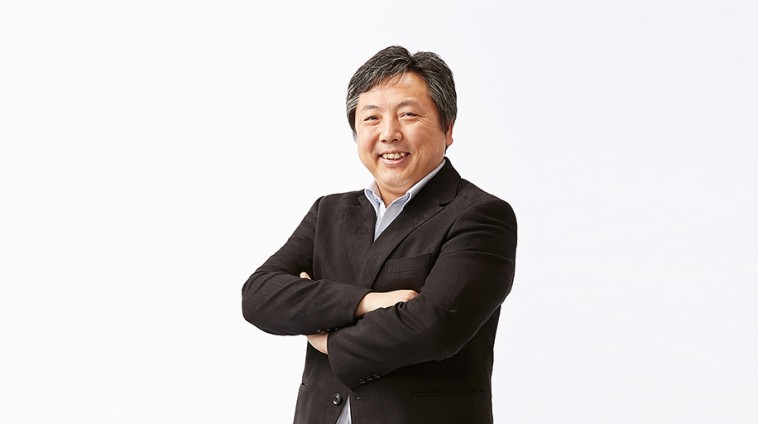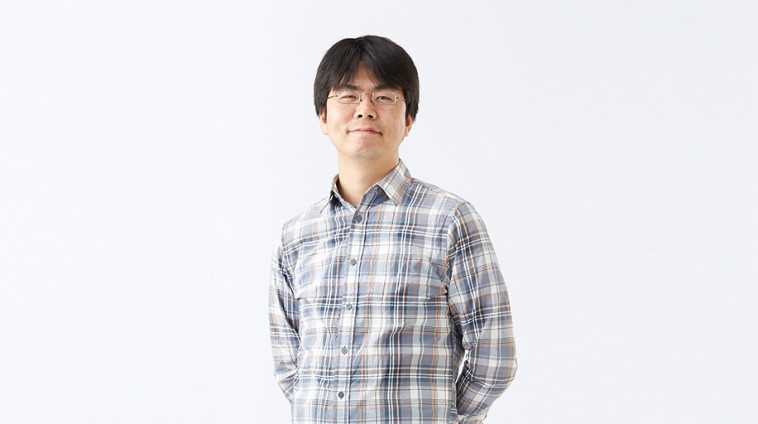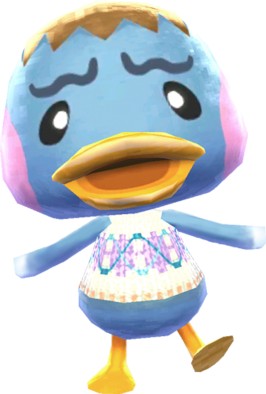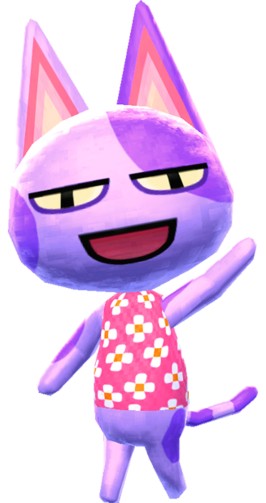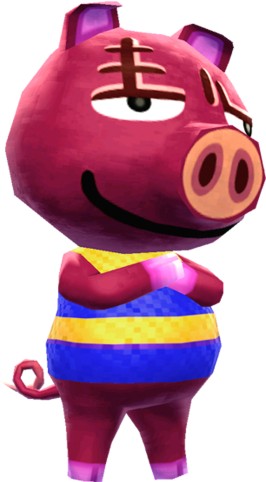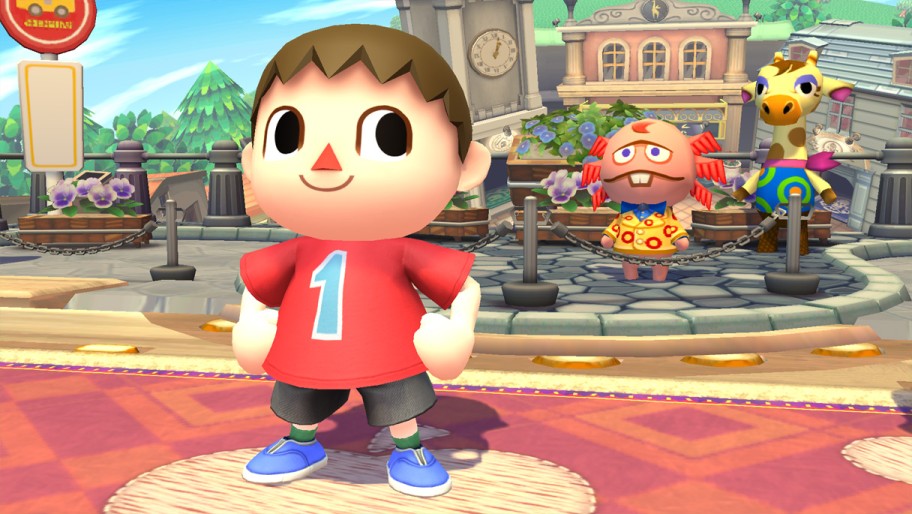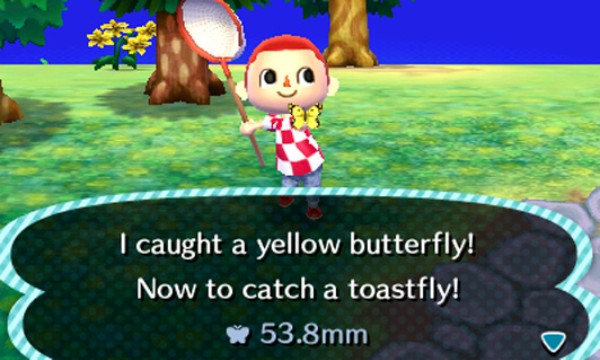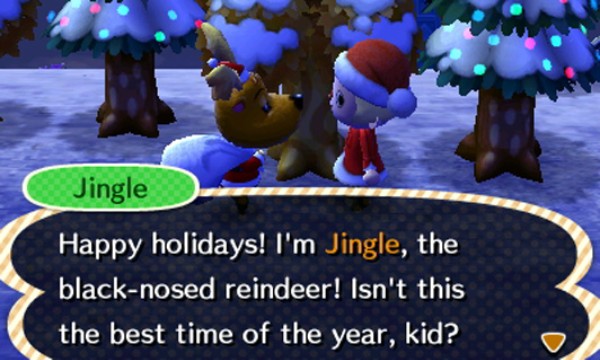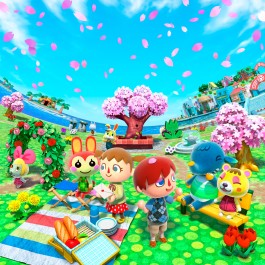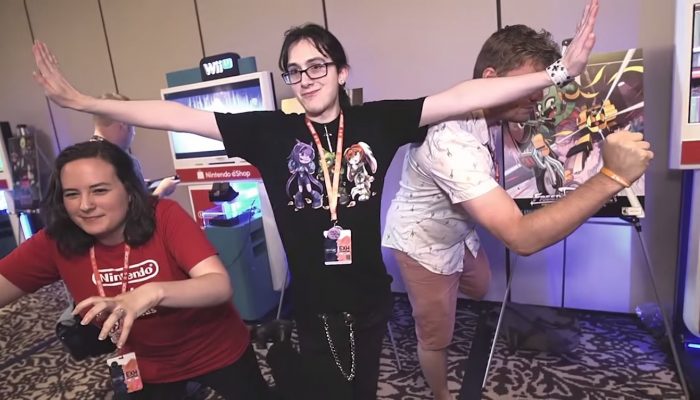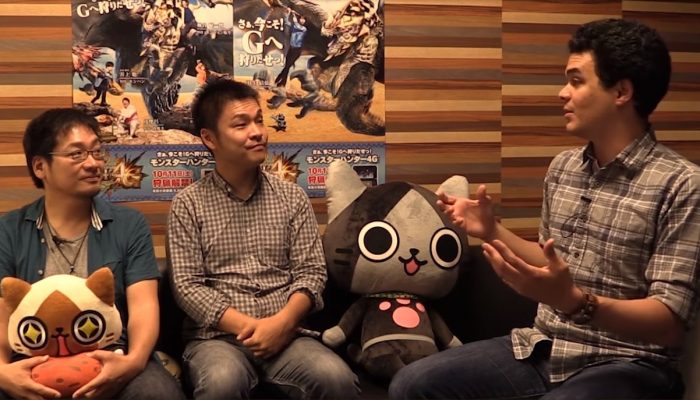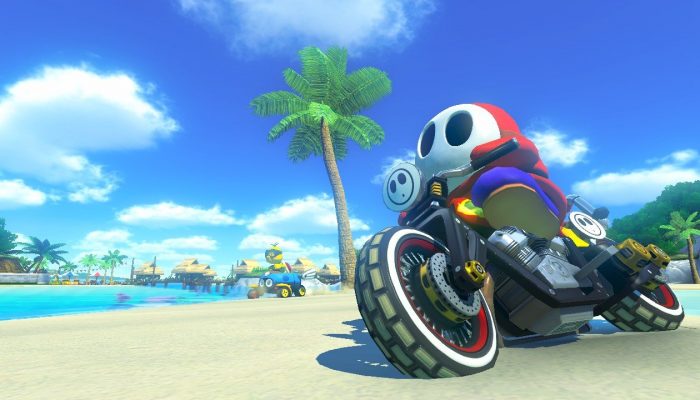 “I think the aim of players hasn’t changed much from the initial days in terms of what they are trying to achieve through the game.”
“I think the aim of players hasn’t changed much from the initial days in terms of what they are trying to achieve through the game.”
☆ NintendObs Weekly – Monday, November 21, 2016 – Sunday, November 27, 2016.
Learn more about the development of the Animal Crossing series in our interview!
General producer Katsuya Eguchi and Animal Crossing series producer Hisashi Nogami provide their insights.
Version française ici : Découvrez-en davantage sur le développement de la série Animal Crossing dans cette entrevue ! 😉
25/11/2016
Animal Crossing: New Leaf – Welcome amiibo is out now in shops and on Nintendo eShop, only for Nintendo 3DS family systems! This refreshed version of Animal Crossing: New Leaf includes loads of extra features like amiibo support, a brand new campground area where animals can visit, an amiibo Camera to take snaps with your favourite animal friends and a pair of additional games. Don’t forget – if you already own Animal Crossing: New Leaf, you can download a free* software update to join the fun and enjoy all the new features!
We’ve talked to general producer Katsuya Eguchi and Animal Crossing series producer Hisashi Nogami a couple of times recently: first to talk about the software update, then to ask them some quick-fire questions on a range of vital issues. In our final interview, the pair were kind enough to return to discuss the Animal Crossing series as a whole and its impact.
Nintendo of Europe: Thank you very much for joining us again. This time, we’d love to hear more about the Animal Crossing series in general. It’s been running for many years, starting as a little thing that grew to something enormous. Did either of you ever think it would become this popular?
Hisashi Nogami: It’s been 15 years since we released the first Animal Crossing in Japan. When we worked on the game, our goal was to just complete it and have the people play it. So at that time we were focused and overwhelmed by that task.
Katsuya Eguchi: It was unprecedented gameplay. So we were worried whether it would be understood and accepted by the player-base first of all. It was very difficult to explain the gameplay. “What kind of game is it?”, we were asked. It was something that was very difficult to answer in a short phrase.
HN: Also, it was hard for us to use a reference, to say that it was a game similar to another game. For Splatoon, we could say it’s like a third-person shooter but it’s different in this and that way, but in Animal Crossing we had nothing like that. We didn’t have a proper genre that we could use as a reference point. It was very difficult to explain to the promotional staff on how to promote it. How do you write a catchphrase for this game? It’s unprecedented!
NoE: So when did you realise that it was something very special for people?
HN: Right after we released it, we saw some players that really dug the game. The original Japanese advertisement featured a young school-age girl, so we thought it would appeal to this user base. Once we released it, the mothers of these children were also playing the game, and then the father would also play, and then the entire family would be playing it! We were really happy when we noticed that.
Originally we wanted to create a game that would promote greater communication between the family, where each player wouldn’t share the same save data, but they would live in the same village. We created a situation like that, where you can exchange letters, you can write messages on the board, or you can speak with the animals and, you know, those animals would spread rumours! We added that kind of component for that purpose, and we noticed that it actually did help further promote communication amongst the family. We felt that people really understood what we were intending to accomplish.
NoE: Over the years you must have heard lots of stories from players about what their village is like, or what Animal Crossing means to them. Can you think of any examples that stick out for you?
HN: Something that was notable to me was a user writing a blog. There’s a duck called Pate that he or she liked very much, and the character moved out of their town. That user was really sad. “My Pate left my village!” They kept writing about how sad they were on the blog. Then eventually the person recovered, found a new friend and then started to enjoy village life again.
I think the game is something that moves people’s emotions. You know, sometimes it’s very common that you have fun and you get a sense of accomplishment, but there are also feelings of sadness and of sorrow that the users were able to feel too. Of course it’s sad at that moment, but in the end they were able to process it and go back to enjoying the game. I think that kind of evolution was unexpected for us. It’s interesting and unexpected.
NoE: We’re still traumatised from the time that Truffles left town.
HN: I think we all experience that!
NoE: So, which of the characters or different personality types in Animal Crossing are you most like?
HN: For me, it’s Bob.
NoE: Ah, Bob! We love Bob!
KE: For me, I forgot the name, the angry pig. Rasher, that’s it! The pig character called Rasher!
That’s my character – I get angry easily. People used to point that out to me. I used to write the text reflecting that kind of personality, but Rasher is actually very nice and very polite. He’s scared of insects actually, so appearances can be deceiving!
You know, it’s like when kids played in the city, there would always be an old man that would come up and say, “Don’t do that, it’s dangerous”. It’s that kind of scariness. It’s not a bad person trying to do a bad thing. It’s a person who is trying to teach and guide people towards good. That’s the idea behind that personality type – scary, but in a good way!
NoE: Both of you have been in the industry for a very long time, going from titles in the Super Mario series, through to Animal Crossing and Splatoon. How do you think that games, or even players, have changed over the years, and has that changed your personal philosophy for design?
HN: I don’t know if they have changed. I think in essence things haven’t changed considerably. For example, looking at the Super Nintendo era, you would play the game on your own and discover where you can go and what you can do. When we were children you would get together with friends to share this information. These days I think the method is different, but the approach is pretty similar.
People play Super Smash Bros. over the internet, but previously we would just get together at each other’s houses and battle each other with our favourite characters! Nowadays we have online networks and social media, so whereas before we had a community of friends who were nearby, now they might be further apart. There’s a wider community of players that you can interact with more easily.
KE: I think the aim of players hasn’t changed much from the initial days in terms of what they are trying to achieve through the game. For example, when they first started playing they couldn’t do something and eventually they could achieve it, or they were able to beat the competition they were fighting. Or you collect a lot of items, then you show it to people and share your impressions.
With time those methods of expressions have evolved to become more beautiful, and perhaps more complicated things can now be achieved. We can now achieve things in an easier way, or we can carry out those games with people who are further away. So those things may have changed, but I don’t think the essence of what people are enjoying from games has changed.
HN: I don’t think it’s just limited to games. Like catching insects outside or, you know, just showing them to friends, like “I caught an interesting insect”. The essence is in other forms of games as well, not just video games. You can use Facebook or Twitter to share information to say you did this or that. The mediums have varied.
There are games where you can express yourself and your individuality more. Before, you were given the framework and you played with it, and now it becomes a bit more of a two-way thing. It’s expanded a bit in terms of the expressive potential.
NoE: It sounds like you haven’t really changed the way you look at games and the way you work on games then.
HN: No, it hasn’t changed. For us, we create games with components in response to how we imagine the players will react. For Animal Crossing or Splatoon, they’re very different types of games, but when we’re creating the games, the basic approach we take is the same for both. The idea can vary, but the approach itself is the same.
KE: Previously, with one software you couldn’t do a variety of complex things, so you had to have one goal for one game. Now, for example with Splatoon, you can have the element of beating your opponent or you can go into the Plaza where you can express yourselves, create communities and interact with other players.
HN: You can combine a variety of gameplays into one. We’ve been able to encompass a greater variety of gameplay styles into one game, and then we see which component matches well with other components. Once we’ve done this, we create the optimal integral experience for the users.
NoE: So what would be your top aim for any game?
HN: Number one is that the player is happy, has fun, is surprised and that the game moves their emotions. That’s the highest priority for me. Also, more personally perhaps, after they finish playing I would like that something remains in them from the game.
For example, you have DRAGON QUEST. It’s a game you play alone, but how far you’ve gone into the game, or how you defeat a character…that’s fun for me. I mean, in my personal experience it’s fun to share that kind of information with my friends. It’s good to have fun inside the game, but I think I also want to create something that you can also enjoy with others as a community.
Of course, it’s important that you compete against yourself and you enjoy something as a single-player game, but it’s nice to be able to share that with others.
NoE: What about you, Mr Eguchi?
KE: Number one, as Mr Nogami mentioned, is that the person who gets the game, and all of their friends, must have a fun experience. They must be able to share that with each other if they want to. That’s the first priority.
During the time that they are playing, they can forget everything, like all the troubles they have. I think that it’s important that the game can have a very high immersive experience. It can be a happy, relaxing kind of game, or it can be a more competitive game. Whatever it is, it’s important that the player can immerse themselves so that they feel like a lot is on the line and they have to strive to achieve.
HN: I think we can make a nice comparison with Animal Crossing and Splatoon. It’s very different gameplay, but the idea of immersion is the same.
KE: To provide a very immersive experience is very important for us. A positive immersive experience.
I want to make something that I can enjoy playing. From my job perspective, I’m not creating the actual game, I’m the producer. I’m more of the co-ordinator. I support and help out the people who are directly making the game. I can’t directly make the game myself – not always, at least! However, in my heart I’m looking at things and saying it’s something that I would enjoy. Frankly speaking, that’s where my motivation and my approach comes from.
NoE: I think that wraps up the questions we had for you. Before we go, do you have any specific message for our readers about Animal Crossing?
KE: It’s been 15 years or so since the first release of Animal Crossing in Japan, so many of the people who played the first game in the series have become mothers and fathers. We want to continue creating games that they can also enjoy along with their children. For the next 15 years as well, we hope we can continue producing games in the Animal Crossing series that you can enjoy along with your children and your parents.
NoE: We are looking forward to it! Thank you very much to both of you for your time.
Animal Crossing: New Leaf – Welcome amiibo is available in shops and as a downloadable version from Nintendo eShop on Nintendo 3DS family systems, or via the official Nintendo website**. Alternatively, if you already own Animal Crossing: New Leaf, you can download a free* software update to enjoy all the new features. Find out more by checking out our interview about the update, our list of things you simply have to try out in the update, or by visiting the official Animal Crossing: New Leaf website.
— Nintendo UK News
Source: Nintendo UK.
At NintendObserver, the comments are on Discord.
Click on Community to learn more. 🙂
…
…Wanna play? Buy a 3DS.
And if you’ve already got yours, click on Animal Crossing New Leaf for everything you need to know about the game. 😀

